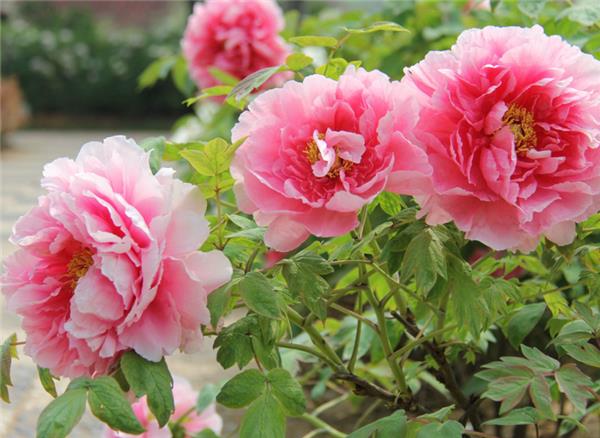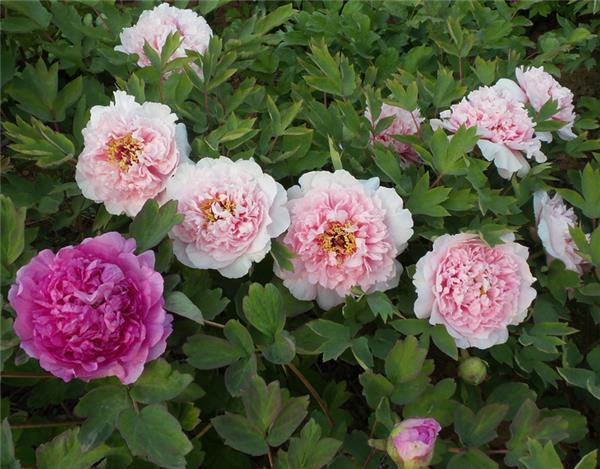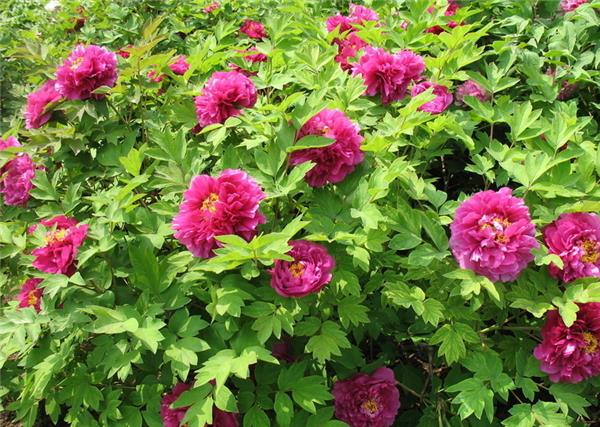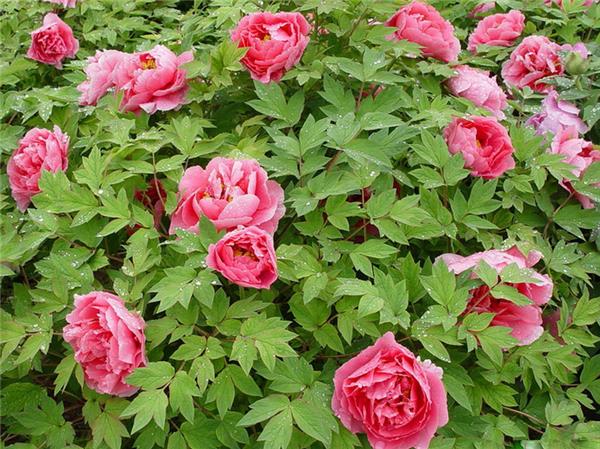Control methods of Diseases and pests in Peony and Flower
Peony is known as "king of flowers". In cultivation types, it can be divided into hundreds of varieties according to the color of flowers, but peony also has a lot of diseases and insect pests. Let's take a look at the prevention and control methods of peony flower diseases and insect pests.

Control methods of Diseases and pests in Peony and Flower
I. Diseases
1. Brown spot: strengthen cultivation management and timely pruning to ensure ventilation and light transmission of plants so as not to get too wet and breed pathogens; timely cutting and burning of diseased leaves are found to reduce the source of infection. During the onset of the disease, 50% carbendazim wettable powder or 80% mancozeb wettable powder 1000 times or 80% mancozeb wettable powder 1000 times or 80% mancozeb wettable powder were sprayed every 10 to 15 days. The liquid should be sprayed evenly on the front and back of the leaves, and the effect was significant. Diseased leaves and diseased plants should be destroyed at the end of autumn, the nursery should be cleaned in winter, and then 7 to 10 times lime-sulfur mixture should be used to spray plant stems to kill pathogens.
2. Scourge: when planting peony, select areas with high terrain and good drainage; spray 160 times of Bordeaux solution before the disease, or spread 400 times of Dysen zinc around the plant; use lime-sulfur mixture and strychnine to prevent and cure the disease; remove and burn the diseased plant in time.

3. Botrytis cinerea: remove diseased plants and burn to reduce the source of infection; crop rotation or deep ploughing is carried out in severe disease areas; attention should be paid to ventilation and light transmission during the growing season to enhance plant resistance; 0.1% equivalent Bordeaux solution is sprayed every 10 to 14 days at the initial stage of the disease, usually 3 to 4 times in a row.
4. Purple plume disease: choose dry, well-drained and loose soil to plant, apply rotten organic fertilizer; when discovering diseased plants, immediately remove the burning, or scrape off the rotten parts, then disinfect them with 4-5 degree lime-sulfur mixture or mercury, and replant. Disinfect the injured plants with lime or sulfur; at the initial stage of the disease, irrigate the roots of the diseased plants with 1000 times of Dysenamine, 500 to 1000 milliliters per plant, and cover the soil immediately after watering; when planting separately in autumn, the roots were soaked in 0.1% copper sulfate solution for 3 hours. then rinse with clean water before planting.

II. Insect pests
1. Cotton blowing shell beetles: strengthen plant quarantine and immediately eliminate pests. Gently brush off the harmful branches and leaves with soft brushes, or cut off harmful branches and leaves and burn them; spray fluoroacetamide during larval incubation, spray Baume 3-5 degrees lime-sulfur mixture during dormancy; protect and release natural enemies, such as Australian ladybug, red ladybug and so on.
2. Red spiders: weeding, fertilizing, eliminating overwintering eggs and reducing the initial harmful insect population; red spiders can be sprayed with 1000 times of 20% triclofenac wettable powder (which can be mixed with other acaricides) or 2000 times of 40% diclofenac emulsion, or 40% omethoate 1200 times to 1500 times. Such as killing eggs with Baume 0.3 degree stone sulfur mixture; protection and utilization of natural enemies, ladybugs, lacewings, thrips and so on.

3. Beetles: make use of its false death to kill adults artificially; kill them with sex attractants; spray 1000 times of liquid to oxidize dimethoate when the pest is serious.
4. Root nodule nematodes: this pest is an underground pest. When the damage is serious, rotation can be carried out, weeds in the nursery can be removed, and nematodes can be ploughed once a month, causing nematode death due to drought. 80% dibromopropane is sprayed, 1.5 kg per mu.
5. Mole cricket, ground tiger and grub: turn the nursery land in time, cultivate carefully, remove weeds in time, apply rotten organic fertilizer, irrigate the roots with omethoate 500 to 800 times, dig up the soil when the damaged stems and leaves are found, and artificially kill larvae or adults.
Related
- Wuhan Hospital Iron Tree Blooming Result Was Instantly Frightened by the Gardener Master
- Which variety of camellia is the most fragrant and best? Which one do you like best?
- What is the small blue coat, the breeding methods and matters needing attention of the succulent plant
- Dormancy time and maintenance management of succulent plants during dormancy
- Minas succulent how to raise, Minas succulent plant pictures
- What are the varieties of winter succulent plants
- How to raise succulent plants in twelve rolls? let's take a look at some experience of breeding twelve rolls.
- Attention should be paid to water control for succulent plants during dormant period (winter and summer)
- Watering experience of twelve rolls of succulent plants
- Techniques for fertilizing succulent plants. An article will let you know how to fertilize succulent plants.



